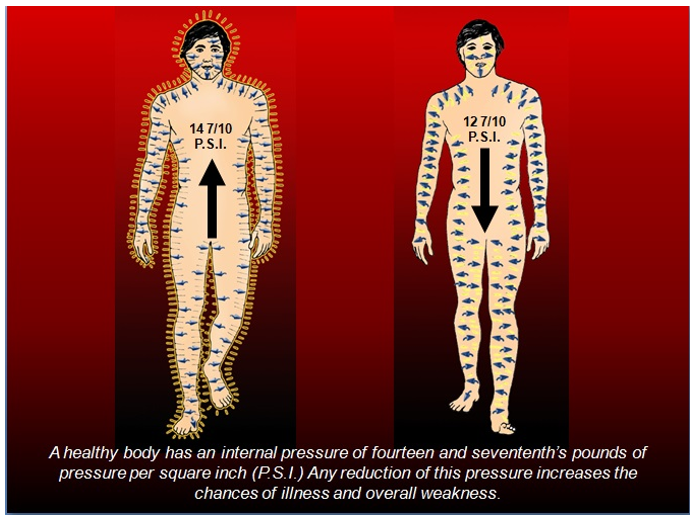Working with Qi Pressure and “Cooking” Qi
All forms of energy when compressed or placed under pressure become more forceful. Take for example, water – usually it is soft and pliant but when placed under pressure or propelled at high speed, it is as hard as rock.
So too, air, when pressurised, is an extremely strong and buoyant force. It is used to inflate car tyres that can withstand great loads and high speeds. Similarly, when we drive in a car and place our hands out of the windows, we feel the force of the air against our hands – it pushes our hand back strongly. This is the same air that we ordinarily walk through without resistance, but when sped up (the effect of the car driving at speed through it), it assumes a great deal of force. It can even lift up massive airplanes. Did you know that the reason why airplanes can fly is that the speed it is propelled forward with makes the air very heavy underneath the wings. It is the compressed air that lifts the airplane no matter how heavy it is!
In the same fashion, Qi has more force when placed under pressure. In fact, this is a secret of wellbeing.
If you look at the bodies of babies and young children, they are always chubby. Their skin looks buoyant. When you press on it, it bounces back. This is an indication of the magnitude of their energy. It is the Qi pressure they contain within their bodies that gives this buoyancy. It is this Qi pressure (pressure caused by having a lot of Qi) that gives them their physical resilience.
On the other hand, the skin of most old people is withered – it sags and is flat. It has no bounce. Having used up their supply of Qi, they lack Qi pressure and this is the reason they have less resilience.
One of the reasons why Taoists concentrate on increasing the amount of Qi within their bodies is to achieve a greater degree of Qi pressure within.
As Mantak Chia says:
“Just as a tyre must maintain proper internal pressure to support a vehicle and move efficiently, our body also requires a steady internal pressure of Qi to function optimally. A healthy body has an internal pressure of 14.7 pounds per square inch (PSI), just like the atmospheric pressure around us. If that inner Qi pressure drops, circulation slows, vitality weakens, and illness can take root.”
“Qi pressure is the hidden engine of your vitality. It moves energy, supports your nervous system, and boosts your ability to heal from within. When the pressure is strong, your energy radiates. When it is weak, even daily life can feel heavy.”
The development of Qi pressure can lead to profound changes in the body and mind, including:
- Stronger Internal Structure – Qi pressure supports and maintains the shape of the organs and tissues, preventing them from collapsing or becoming compressed due to aging or fatigue. A well-pressurised body allows energy to flow smoothly through all systems.
- Enhanced Circulation – Increasing Qi pressure assists the movement of blood, lymph, and other bodily fluids, reducing strain on the heart and improving overall circulation. This leads to better oxygenation, detoxification, and cellular regeneration.
- Structural Integrity & Injury Prevention – The fascia (connective tissue), tendons, and ligaments are directly influenced by Qi pressure. When properly pressurised, they bind the skeletal structure together more effectively, reducing the risk of injury and improving physical balance.
- Resilience Against External Forces – Qi pressure acts as a protective shield around the body. Just as a well-inflated tire absorbs shocks and impact, a body filled with Qi pressure better withstands injuries, sudden force, and external stress.
- Increased Energy Storage & Utilisation – By condensing and packing Qi, these exercises enhance the body’s ability to store and sustain energy reserves, making Qi more available for use when needed. This leads to greater stamina, endurance, and mental clarity.

[Image from Mantak Chia]
The exercises in this section are designed to work with Qi pressure, as opposed to just working with Qi, as we have been doing so far in this Course. While Qi itself is the fundamental life force that flows through the body, Qi pressure introduces a new dimension: compression and intensification of energy to amplify its strength and effectiveness.
Precautions:
- Qi pressure exercises should not be done by people with high blood pressure
- Qi pressure exercises should not be done by women who are pregnant.
- Qi pressure exercises should not be done by women during their menstrual cycle.
- After doing these exercises, always lower the energy down and store it into the navel centre.
